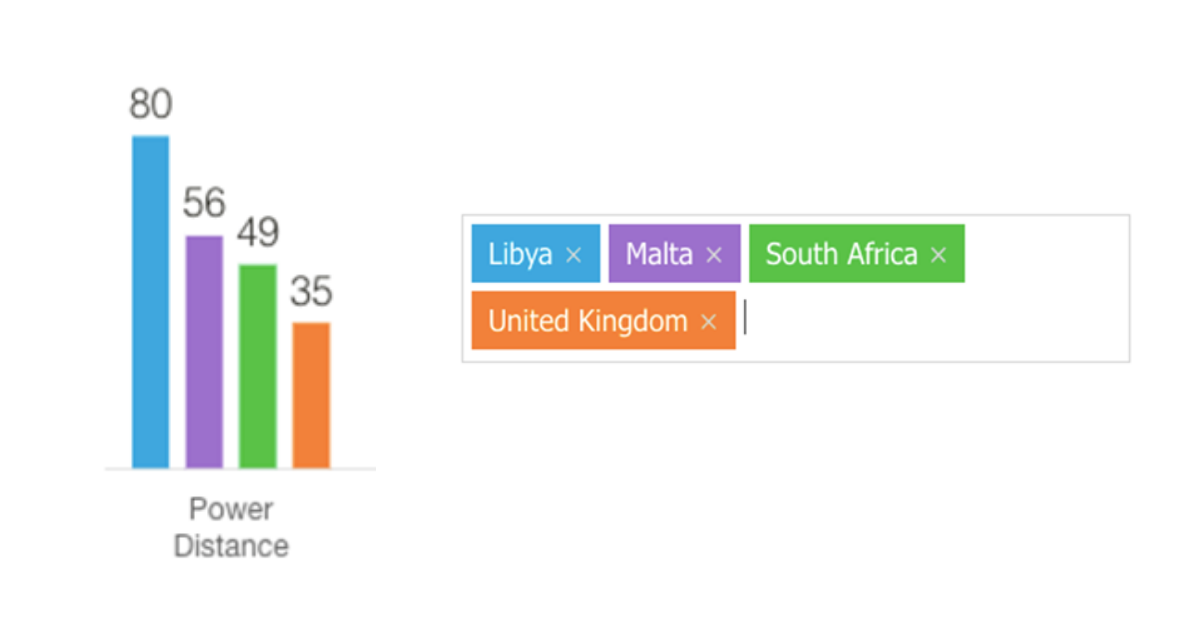There are many different ways of being a leader: the concepts of leadership and power take on different characteristics depending on what perspective we use to describe them.
According to some theories, leadership is innate, while for others it consists of specific personality traits or lies in the ability to use the right approach based on each situation.
But one thing is certain: anyone who wants to be a good leader in the newly arrived 2022 must face the issue of diversity; in fact, almost every team or business sector is faced with some form of cultural diversity, whether it’s in relation to employees and team members to work with or markets to explore. This aspect needs to be not only understood but also valued in order to create a cohesive and functional work environment.
When approaching cultures other than our own, it is good to keep in mind that the idea of leadership and the behaviours to adopt in relation to it, like every other aspect of our lives, are influenced and shaped by the set of cultural and social constructs to which we belong. This means that we will often find ourselves having to face people and companies that have very different ideas, expectations and habits than those we are used to.
The interpretation we give to the relationship between private and working life, the choice to communicate and give feedback in a more or less direct way, the stimuli or control that each of us deems necessary to achieve a goal, are all elements that often differ strongly from one culture to another.
Becoming aware and learning to respect this side of work can be very challenging for a leader; because if on the one hand the idea of facilitation and cooperation is roughly accepted by everyone, it is not always easy to adapt a leadership style to the preferences of the team and/or the individual employees.
In these situations, leaders will find themselves having to deal with the need to change or adapt their way of acting and managing – more comfortable and familiar – with a method that is sometimes difficult to understand, but often necessary to achieve the results.
Questioning aspects that are so deeply anchored to one’s worldview is not always a simple process; at times one might be tempted to hide himself behind the belief that his own methods are the only ones that are valid and necessary for the proper conduct of the work. But such an approach might be detrimental to the success of the team and to cooperation: it can result in a decrease in the perception of credibility by employees and it can lead to misunderstandings and frustrations.
In intercultural management, leadership style is seen on a continuum from a more egalitarian to a more hierarchical approach. Hofstede, one of the pioneers in the field, called this dimension ‘Power Distance’, considering with this term the way power distribution is perceived and preferred by individuals in a specific cultural group.
In his work, national cultures are put on a continuum according to their place in the single dimensions. What it is important it is not where a specific national culture is on the single dimension, but its position in comparison and its relationship with the other cultures. In this graphic we can see how Malta, Libya, South Africa and the United Kingdom, for example, are positioned according to the Power Distance dimension and their different values.

As we can understand from the graphic, people from Libya (and this is also a common trait for Middle Eastern cultures), have a preference for a more hierarchical leadership style compared with people in the UK, that tends to favour a more egalitarian approach. According to Erin Meyer, another important scholar in the field, power distance relates to questions like:
- How much respect or deference is shown to an authority figure in your culture?
- How god-like is the boss?
- Is it acceptable to skip layers in your company? If you want to communicate a message to someone two levels above or below you, should you go through the hierarchical chain?
- When you are the boss, what gives you an aura of authority?
Despite your culture of origin and its position on the Hofstede scale, answering these questions will help you to understand what is your preferred leadership style (either if you are the leader or an employee/team member). Knowing it will help you to adopt and adapt to a different leadership style when and if needed. Across cultures, there is not the perfect and right leadership style. Even if now in Western cultures a more egalitarian approach seems to prevail, it need not be the right one for your culturally diverse team.
To be good intercultural leaders, it is therefore necessary to have an intercultural mindset, but what are the components that need to be trained in order to achieve it?
According to recent studies, the most important aspects to pay attention to in order to be good intercultural leaders are essentially three:
- Knowledge: we must be curious, have the desire to know the lives of others and discover cultures other than our own; it is necessary to understand how a culture works and relates to others;
- Mindfulness: we have to pay attention, to know how to observe in an analytical way the situations that occur around us and the stimuli that the coexistence between cultures offers;
- Choose correctly: we need to be able to choose the behaviour that best suits the situation in which we find ourselves.
Based on our experience at GMD, it is also interesting to observe how, once again, the best way to embrace change and make it work for everyone is being able to unveil conscious and unconscious biases and to have, with each and every team member and the team as a whole, ‘uncomfortable conversations’. Knowing what the preferred leadership style of every individual is will help you to understand what the best way to manage the team is, translate it into good practices and habits, improving communication and performance.
The author would like to thank Chiara Perini, GMD intern, for her support in the research and writing of this article.
Say goodbye to your 60-hour work week
7 tips to stop business leaders from overworking.
Reach new heights: 6 key strategies to accelerate business growth
Growth is an ongoing process that business leaders have to work hard towards and be patient with.
Embracing change – My journey beyond the comfort zone
The comfort of routine can dull the spark of innovation and can dampen the spirit of growth, leaving both oneself ...
Adieu email stress – Five tips for business leaders to breeze through their inbox
Going through emails is not only a tedious task but it also leads to a drop in productivity.











